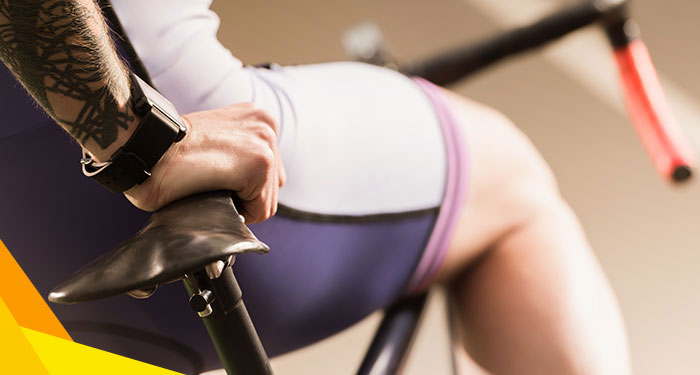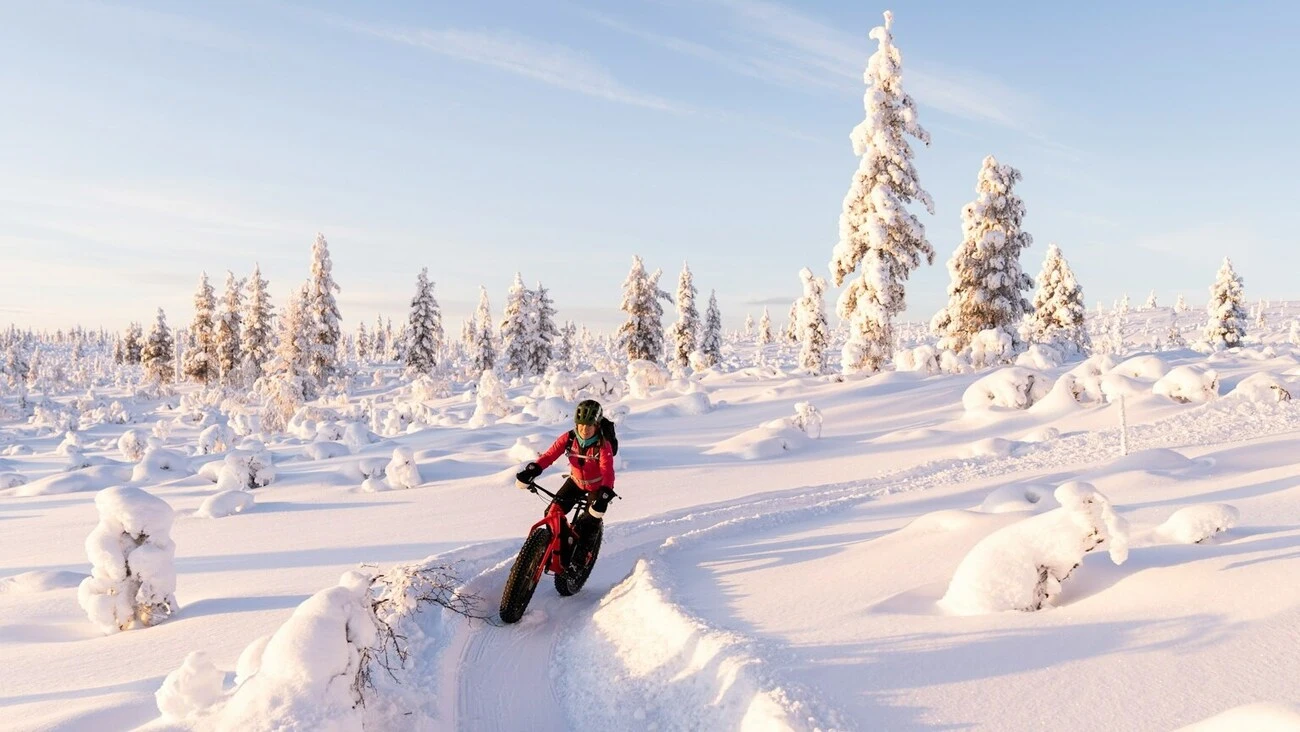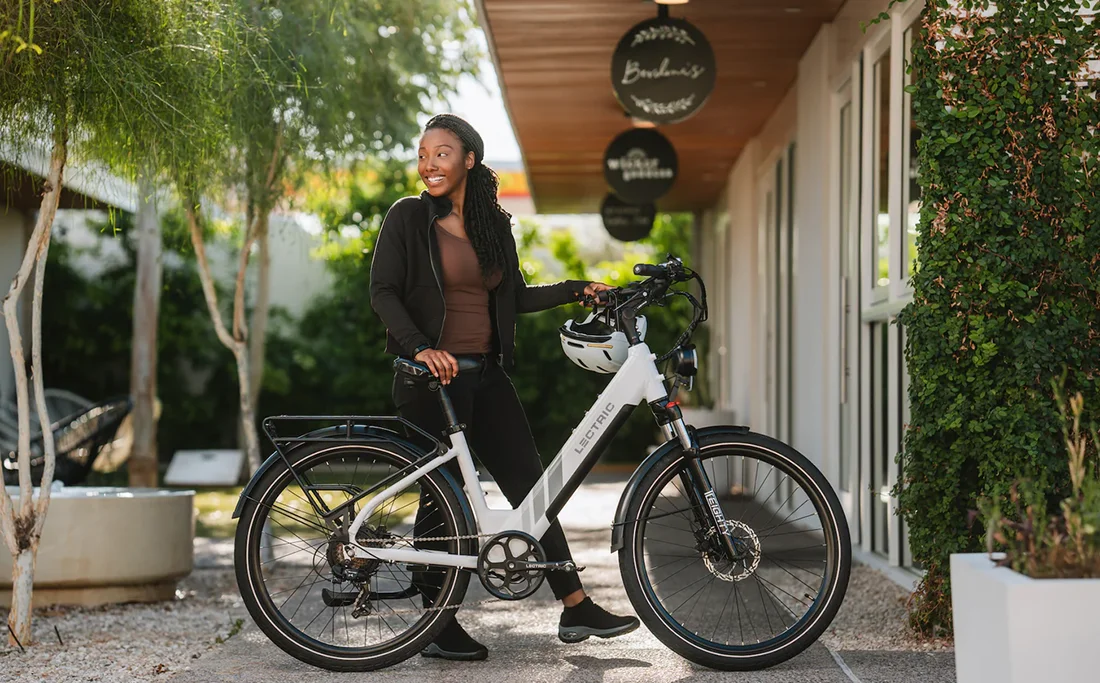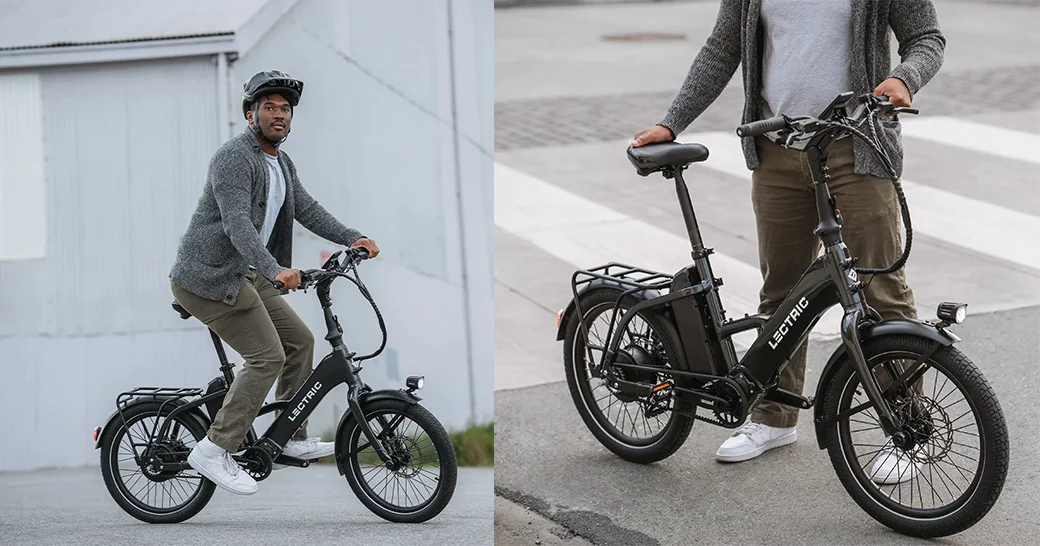When it comes to on-the-bike comfort, things don’t get much more important than choosing the right bike seat. But with so much choice out there, the process can be a minefield. Here’s all you need to know!
Part of Cycling Advice
Getting the best bike saddle for your type of riding and body anatomy is crucial to feeling comfortable on the bike.
Not only that but making the wrong choice could even cause harm, as saddle-related injuries are some of the most common in cycling.
The fact you’re reading this article probably means that you’re not satisfied with your current bike saddle. One solution to that problem is to get a new saddle that will fit your needs better.
In this guide, we’ll tell you everything you need to know about how to choose a bike seat and talk about the different materials, padding solutions, sizes, and types of saddles.
So sit back comfortably (oh, wait…) and keep reading below.
Shapes | Differences | Materials | Padding | Sizes | Types | FAQ
Contents
Bicycle Saddle Shapes
Part of the problem when choosing the bike saddle is that they come in so many different shapes. Unlike with other bike parts, taking recommendations from friends does not work here. The perfect saddle for one person could be the archenemy of another person’s undercarriage.
In order to make the right choice, you need to understand why saddles are shaped differently in the first place. Here are some of the most common types.
Flat Bike Seats

Flat bike saddles have no curves front to back or side to side. This type is ideal for people who primarily ride in a more upright position, but like to be able to shift their position on the saddle from time to time.
If you’re a recreational cyclist riding on an endurance road bike and you frequently switch between different hand positions (drops, hoods, and tops), these are going to be the most comfortable bike seats for you.
Waved Bike Seats

Waved saddles have a curve from front to back and are designed for people who ride in a more aggressive, forward-leaning posture. For example, this is typically the saddle type of choice for triathletes and TT riders.
Waved saddles allow you to bend forward more easily, but they provide you with fewer comfortable positions compared to flat saddles.
Curved Bike Seats
The term “curved saddle” typically refers to bike seats that have a side-to-side curvature. This type can be a double-edged sword. If you get the perfect size for your body anatomy, a curved saddle will keep you perfectly centered and give you maximum comfort and power transfer.
However, flat saddles will give you more support if the saddle isn’t the ideal size for your sit bones. So, unless you’re getting a professional bike fit, we recommend playing it safe and getting the flat type.
T and Pear Shaped Saddles
This distinction has to do with the shape of the saddle from the top POV. A T-shaped saddle has a long nose and widens quickly towards the back. This type prevents thigh rub but gives you fewer riding positions.
On the other hand, a pear-shaped bike saddle has a shorter nose and becomes wider gradually towards the rear. Therefore, you’ll have a larger number of comfortable riding positions, but you might experience some chafing.
Cutout Saddles

The area of your body most at risk from a bad saddle is the perineum—the area between your sit bones, with a plethora of arteries and nerves. That’s why the majority of high-quality bike saddles have a central cutout or at least a dent that will reduce the pressure on the perineum. The cutout also improves airflow, which reduces moisture and friction.
However, as everyone’s anatomy is different, some riders will benefit from this feature more than others. A cutout saddle benefits the majority of men and women, but some riders might not find it that important.
Some riders might even want a so-called “split seat,” which is a noseless saddle with side-by-side bike seat cushions that maximize perineal relief and airflow.
What Is The Difference Between Men’s And Women’s Saddles?
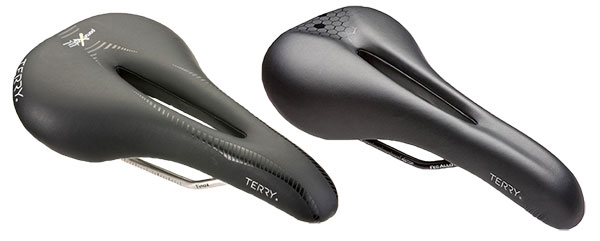
The majority of bicycle seats are gender-specific, even though there are also many unisex saddles available out there. They are usually advertised as bike seats for men or bike seats for women. The reason is that men’s and women’s anatomies are significantly different down there.
Women typically have wider sit bones, so wide bike seats provide better comfort and support for women. The most comfortable bike seats for women also typically have a slightly different shape of the cutout or middle groove that relieves pressure on soft tissue areas.
Related: Best Bike Seats For Women
However, keep in mind that different types of saddles are simply made for different butts. So, in some cases, a man would feel better on a women’s saddle and vice versa. Therefore, feel free to experiment as a lot of people don’t fit into the image of an average man or woman.
Bicycle Saddle Cover Materials
Bicycle saddles differ in terms of the materials they are made from. Different materials don’t only affect the comfort, but also the support of the saddle and its impact on performance.
Let’s take a closer look at some of the most common cover materials used for making bike saddles.
Synthetic
Most bicycle seats are made with synthetic materials, such as polyester. This material is so popular because it is affordable, lightweight, waterproof, and does not require any break-in time.
This is a popular choice for all types of saddles, including road, mountain, touring, and saddles for casual riding.
Leather
Leather saddles are made from a leather cover that’s stretched over a metal frame. The benefit of using a leather saddle is that the leather breaks in after around 200 miles of riding and molds to the shape of the rider’s body.
Therefore, these saddles allow you to get a personalized fit that will perfectly suit your anatomy. However, the initial break-in period may cause some discomfort.
These saddles are typically used by bike tourers and commuters who value comfort over performance. The main disadvantages of leather saddles include lack of water resistance, price, weight, and maintenance.
Carbon Fiber
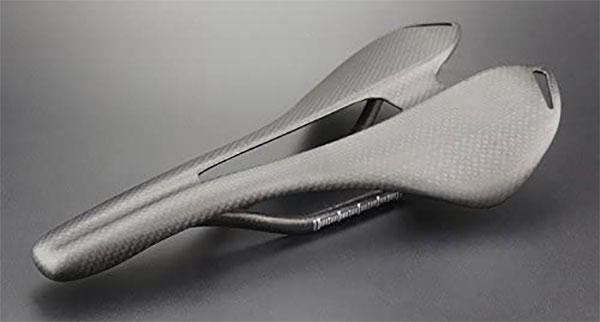
Some extreme performance-oriented saddles do not have any type of cover. Instead, they only have a carbon fiber frame that you can sit on and hope for the best.
These saddles are ideal for road racers who want to minimize power loss caused by the “springiness” of the saddle cover and padding and save as much weight as possible. For some riders, if chosen right, these can be the most comfortable bike seats.
Types of Padding
Most bicycle saddles have some type of padding beneath the saddle cover. Bicycle seat cushions are there to provide better support for the sit bones and improve comfort, especially on long rides.
However, different types of padded bike seats will suit different types of riders and different purposes. Which one is right for you?
Gel Bike Seats
Gel padding is very common and is most often used for entry-level saddles. These are usually the most comfortable bike seats because the gel instantly molds to your body and provides the best support.
However, gel bike seats have some drawbacks that do not make them the best choice. Namely, over time, the gel loses its springiness and gets compacted, which affects comfort negatively.
Saddles with gel padding are typically the go-to choice for recreational riders, but performance riders should consider foam or no padding.
Foam Bike Seats
Foam padded bike seats are the go-to choice of performance-oriented road and MTB riders. The reason is that foam provides excellent support and comfort and springs back to shape more easily compared to gel bike seats.
Foam padding is also lighter than gel and the foam takes much longer to get compacted and lose its shape compared to gel. If you ride often and your sit bones are used to the pressure, saddles with less foam are a better choice as they compact less and provide excellent power transfer.
No Padding
As mentioned above, some models have no bicycle seat cushions. In addition to carbon fiber saddles, leather saddles also have zero cushioning. Some brands also make saddles with cotton covers that have no padding.
Having zero padding can do wonders for some riders or wreak havoc on others. If you’ve already tried a bunch of padded bike seats and none of them works, these saddles might be worth a try.
Saddle Pad
A saddle pad is an additional cover that you can place over your saddle to act as an additional bicycle seat cushion. Though this sounds like a great solution, it actually has many disadvantages.
The saddle pad moves around so it can potentially cause more harm than good. If you’re a recreational rider or you’re doing short commutes, a saddle pad could be a good solution. Otherwise, it’s much better to invest in a high-quality saddle with foam padding and a pair of padded bike shorts.
Bicycle Saddle Sizes
Bike saddles come in different sizes to accommodate different body sizes.
Buying the best bike seat in the world will do you no good if it’s the wrong size.
The saddle size refers to the width of the saddle measured on the widest point, across the top. Therefore, in order to find the right bicycle seat size for you, you need to know the width of your sit bones.
Ideally, you want a saddle that’s wide enough to give you enough support, but not too wide as to cause thigh rubbing. The rule of the thumb is to choose a saddle that’s 20mm wider than the width of your sit bones.
Keep in mind that bicycle seats for men and women’s bike saddles differ in terms of width.
Women’s saddles are usually wider because women typically have wider sit bones than men. However, even if you follow the measuring technique above and buy a gender-specific saddle, you may still be unhappy with the result.
The best way to get the right size is to try a bunch of saddles and then determine which one feels the best.
Bike Seats for Different Types of Riding
In addition to all the distinctions mentioned above, bicycle saddles are also categorized based on the type of riding they’re intended for.
Therefore, depending on whether you’re a road or MTB cyclist, or a commuter or recreational rider, you should be looking at a specific type of saddle.
Long Read | Different Bike Types
Here’s a quick rundown of some of the main characteristics based on these classifications.
Road Bike Seats

Road bike saddles usually have a T shape (long and narrow) and feature minimal padding. They prioritize power transfer while pedaling, but if you choose right they can also be quite comfortable, even on long rides.
Road bike saddles are typically made from synthetic materials and have foam or gel padding.
Mountain Bike Seats
Mountain bikers frequently get in and out of the saddle and change their position on the saddle, due to the nature of mountain biking. Therefore, a mountain bike saddle needs to provide maximum support in all situations.
Mountain bike seats have padding that provides maximum support for the sit bones without obstructing movement on the saddle. Moreover, these saddles are usually made from more durable materials that can endure the challenges of mountain biking.
Seats for Bike Commuting
Saddles for bike commuting prioritize comfort and weather resistance. These are typically synthetic saddles that are waterproof, as many bike commuters ride in all weather conditions.
Bike commuting saddles also have more padding than road and MTB saddles, but much less than comfort saddles.
Seats for Recreational Riding

Recreational cyclists usually ride on city bikes, cruisers, and comfort bikes that have an upright riding position. As a result, most of the rider’s weight is on the sit bones, so wide bike seats are typically reserved for recreational riders as they prioritize comfort and softness.
Oftentimes, such saddles even have suspension springs or elastomers that further improve comfort by reducing road vibrations.
Related: Most Comfortable Bike Seats
FAQ
How do I choose a bike saddle?
In order to choose the best bike seat, you need to consider what type of riding you do as well as your body anatomy. Bike saddles differ in terms of size, shape, padding, and materials, all of which will affect the comfort, support, and performance they provide.
Do bike saddles make a difference?
Bicycle seats make a huge difference in comfort, power transfer, and even safety. Choosing the best bike seat means that you will avoid saddle sores and more serious injuries, as well as get the best pedaling efficiency. Consider a new saddle if you have a problem with any of these.
Do bike seats fit all bikes?
Nowadays, the majority of modern saddles are fitted on the bike using the same mechanism. Most saddles have two rails that are clamped firmly on top of the seat post. Therefore, you should be able to fit any type of saddle on any type of bicycle, with a few exceptions.
Why does my bum hurt when riding a bike?
Saddle sores are usually caused by riding on a saddle that’s not suitable for your body anatomy or the type of riding you do. However, if you’re a new rider, saddle sores are normal for the first few weeks. They can also be caused by wearing the wrong clothes.
Why are bicycle seats so small?
Best bike seats are usually long and narrow in order to provide just the right amount of support for sit bones without causing thigh rubbing while turning the pedals. You don’t need a wide bike seat to get the best comfort and support.
Are bike seat posts universal?
Bike seat posts are not universal. They differ in terms of length, diameter, shape, material, and saddle clamping mechanism. You need to consider all of these factors if you’re looking to buy a new seat post. However, there are certain standards that will make it easier for you to choose.
Do bike seats get more comfortable?
Some bike seats get more comfortable over time, whereas others get less comfortable. Leather saddles become more comfortable after the initial 200-mile break-in period, whereas gel saddles usually get less comfortable over time as the gel padding gets compacted, and the same is true for foam-padded saddles.
Where should you sit on a bike saddle?
In most cases, your sit bones should rest on the widest part of the saddle. This way, you will get maximum support and enjoy the most comfort. However, depending on how you ride, you sometimes might want to shift your weight forward or backward on the saddle.
Why is my bike seat so uncomfortable?
A bike saddle usually feels uncomfortable if it’s not the right type for you. This means that you may need a different size saddle, a different type of padding, or a completely different shape. It’s best to try several different bike saddles and find out which one feels the best.
Our Thoughts
 As you can see, finding the best bike seat is not easy, but it is not rocket science either. Hopefully, this guide demystifies the entire process and answers most of the questions you might have.
As you can see, finding the best bike seat is not easy, but it is not rocket science either. Hopefully, this guide demystifies the entire process and answers most of the questions you might have.
To sum, when choosing which bike saddle to get, you should consider the type of riding you do, the width of your sit bones, your body anatomy, as well as the shape, material, and padding of the saddle itself.
Remember, saddle sores are normal if you’re a complete beginner and you’re just starting to ride.
However, if they persist, it’s usually your body’s way of telling you that you need to change something—and oftentimes it’s the saddle.
Now that you’re ready, feel free to see our top saddle picks.
See Our Best Bike Saddles
